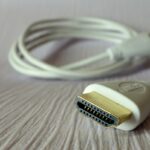What are The Benefits of computer networks


Computer networks
A computer network is two or more computers, and these devices are connected to each other through connecting wires called cables, or wirelessly so that data and information are exchanged between them, and it is possible that the components of the network are computers , printers, cameras, phones, servers, databases, or any other devices that require communication with other devices to exchange data with each other.
Computer networks can be classified according to the method of interconnection between devices; There are three main types of networks in this field: Wired networks, which are the network interconnected by wired connection, either with twisted copper wires or fiber optics, and it may be a wireless network that depends on Radio wave communication between networks, and there are also advanced networks ; They are satellite networks through which devices are connected to each other through satellite signals sent to Earth, and they are the most accurate and fastest networks on Earth.
Read More:How to protect your computer from hacking
Types of computer networks
There are many types of networks ; Because each type has a specific use and certain criteria, and the geographical area is one of the most important factors that control the type of network to be used, and the types of networks in the computer world are:
- Local Area Network: It is the network that has its devices in one place or one building; For example, a network in a particular university is considered a local network, and it can also consist of only two computers.
- Urban or urban network (MAN): It is the network that covers an entire city, that is, it covers a very large geographical area.
- Wide Area Network: The largest example is the Internet ; It is considered a broad network because it covers more than one country and continent.
- Personal Area Network: It is the network for one person, and it includes the various devices on which the person works, such as a computer, telephone, and printer, and is usually located within the scope of the owner’s presence.
Computer network shapes
The forms of computer networks vary according to the purposes of their use, and the forms differ according to the distribution of devices, or according to the method and direction of data transmission , or the dependence of network devices on a main server that regulates the transfer of data between them. Among the forms of computer networks are:
- Linear form : It is the first and oldest form of network. It is a main line that all devices on the network are connected to, and it is used as a main data transmission line. If the line breaks, the network will be completely disrupted.
- Ring shape : In this form of network, the devices are directly connected to the nearby devices, forming what looks like a ring. Each device in the network is connected to two other devices in the network, and data is transmitted in this line in one direction only.
- Star shape : The devices in this shape are connected to a master device that is responsible for transferring data between devices within the network.
- Mesh shape : It is one of the best shapes that can be used in network design . Because each device in the network is directly connected with all other devices within the same network range, if one path is down, this failure does not affect the effectiveness of the network because each device has many other options to transfer data to the target device due to the connection of each device with all other devices directly.
Read More:What is the Difference Between CD and DVD
History of computer networks
In the late 1950’s, the first attempts to link the devices were the military radar computers, and in 1964 researchers at Dartmouth College developed the Dartmouth sharing system, and in the same year at the Massachusetts Institute of Technology, a research institute, General Electric and Bell Laboratories supported the use of the computer In the process of routing and managing telephone communications, and in 1965 Thomas Marill and Lawrence Roberts made the first wide area network (WAN), and in 1977 some commercial services were developed using networks using the X.25 protocol, and in 1991 the home broadband lines were launched, and in 1996 AD invented Dr. Brent “56 kilobyte modem”, and since 2000 to the present time, computer networks of all kinds, devices and technological techniques have continued to develop and advance, so there have been great speeds for data transmission and different types of cables used to connect devices and networksto each other
Benefits of computer networks
Computer networks are one of the most inventions that have benefited the technological progress and development that the world is currently witnessing, due to the solutions it provided for the exchange of information and data very quickly and easily, and among the countless benefits of networks :
- Connecting expensive devices to multiple computers; Such as connecting the laser printer and the display device (in English: Data Show) through this network.
- The ability to transfer DATA data to other devices connected to the network, without the need to transfer this data by CD and flash memory, and thus contribute to reducing the time during the transfer process, in addition to saving a little effort, and this data can be placed in a file known as the database , It is often used to link the devices of media organizations, which put files in a date and name, to facilitate reference to them when needed, and this is known as data management .
- Connecting to the Internet, which is one of the things that affected the development of technology, and this network is linked between users from all over the world; It made the world look like a small village, and through this network users could access endless information, and talk to people in different places through it.
- It has made it easier for many recent graduates and job seekers to send CVs to various companies inside and outside the country’s borders, and to conduct personal interviews through these networks , without the need to go to buy newspapers, to watch advertisements and then go to the company’s headquarters to conduct the interview, and thus you have saved on Many people have money, and effort, but they need to connect to the Internet first.
- File sharing: Data can be easily shared between different users, or accessed remotely if it is kept on other geographically remote devices.
- Increasing storage capacity: Accessing files and multimedia, such as: photos and music, stored on other devices within the network, and this saves a lot of storage space on many devices because the required files are located on only one device.










